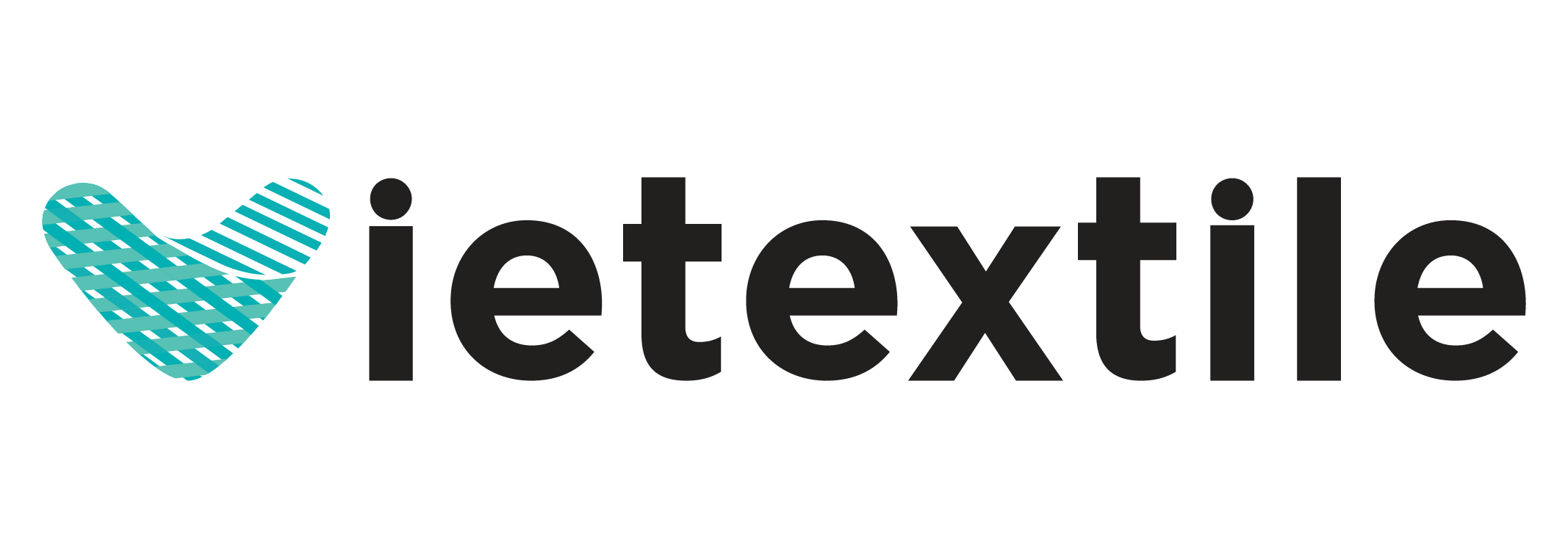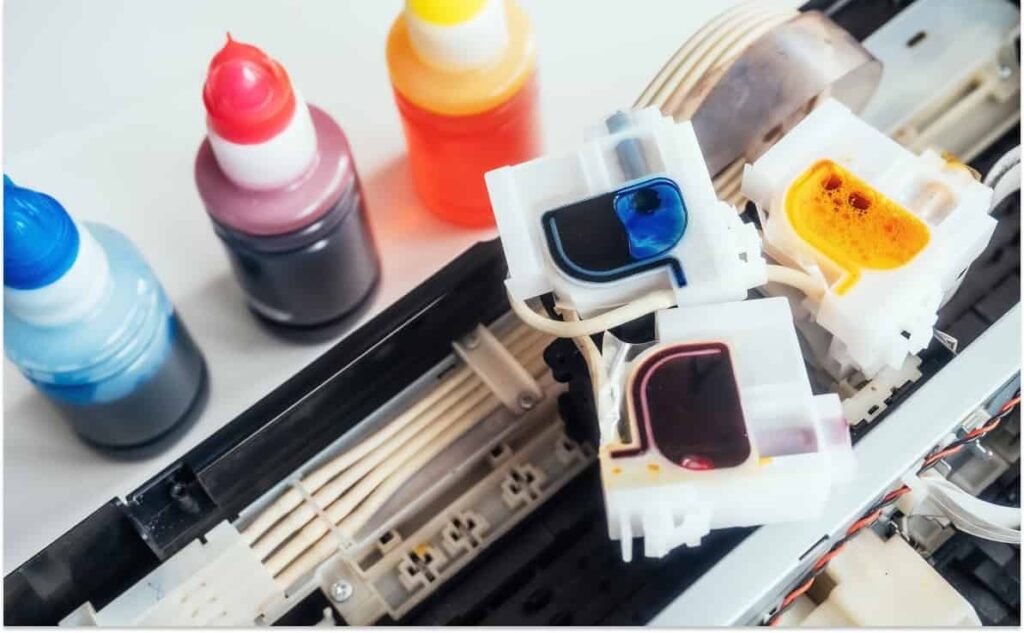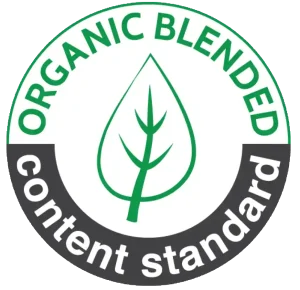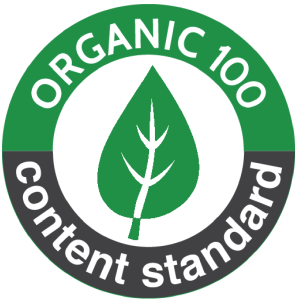Pigment Ink is one of the most popular types of digital printing ink today, especially in the fabric printing industry. This type of ink plays a crucial role in shaping the quality and durability of fashion products. This article will deeply analyze the superior characteristics as well as the limitations of this ink when applied to fabric printing, providing manufacturers and fashion brands with the most comprehensive overview.
The modern fashion industry is strongly shifting towards sustainable and highly durable printing solutions. In this context, Pigment Ink has emerged as an optimal choice due to its excellent color fastness and environmental friendliness. To help you better understand this technology, we will present details ranging from the composition, mechanism of action, to the specific applications of the pigment solution in printing on various fabric materials, including challenges related to cost and technical processes.
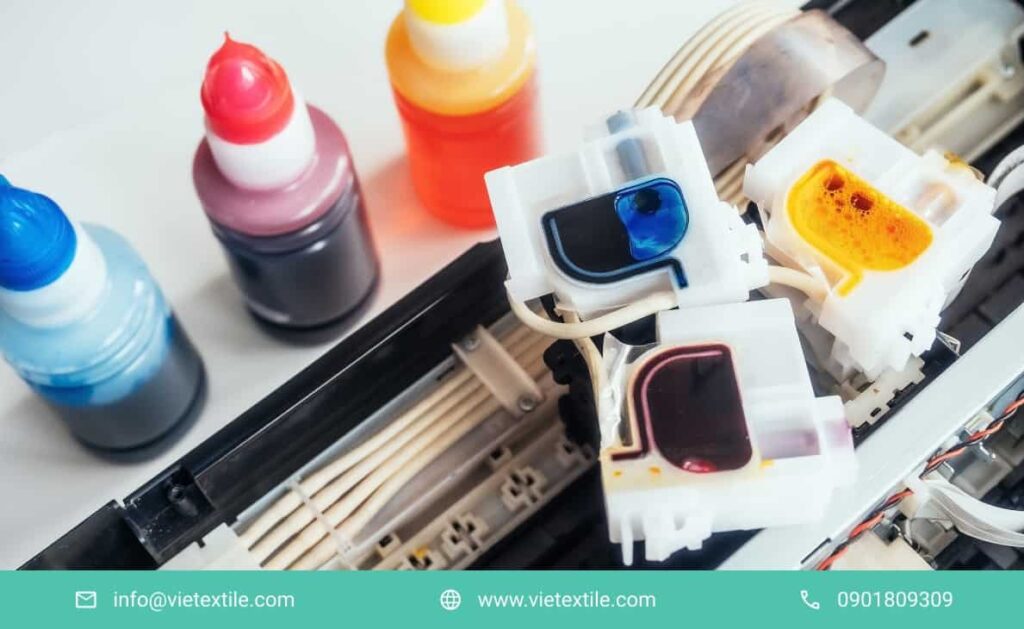
1. What is Pigment Ink? Composition and Mechanism of Action
Nội dung tóm tắt
TogglePigment Ink, also known as pigment color ink, has a composition entirely different from Dye Ink. The core difference lies in the color particle.
1.1. Basic Concept of Pigment Ink
This ink consists of solid, insoluble color particles suspended in a liquid solvent. During printing, these color particles adhere to the surface of the material rather than penetrating and dyeing the fabric fibers like Dye Ink. This is the main reason why this ink offers superior color fastness and resistance to water and UV rays. The use of pigment particles helps the color maintain long-term stability.
1.2. Detailed Composition of Pigment Color Particles
The color particle (pigment) is the main component that creates the characteristics of this type of ink. The size of these color particles is extremely small, usually only about 0.1 to 0.2 micrometers. To ensure these particles do not settle or clump, they are encapsulated by a special polymer or resin layer. This coating has two main functions: protecting the color particles from chemical agents and helping them disperse evenly in the solvent. Thanks to its special structure, this ink maintains stable print quality over time.
1.3. Adhesion Mechanism When Printing on Fabric
The printing process using pigment technology on fabric is not based on chemical reactions or dyeing. Instead, after being sprayed onto the fabric surface, the solvent evaporates, leaving behind the pigment particles and the protective polymer layer. This polymer layer acts as a binder, fixing the color particles onto the fabric surface through a heat curing or hot pressing process. This creates a physical color film on the surface, providing high mechanical durability.
1.3.1. The Role of Heat in the Process
Temperature plays a decisive role in locking the color of the ink solution. The curing or heat pressing process helps the polymer layer melt and tightly bond with the fabric fibers. Without this step, the ink can easily peel off during washing or rubbing. Controlling the temperature and curing time is a key factor in ensuring the final quality of products printed with this method.
2. Superior Advantages of Pigment Ink in Fashion Fabric Printing
Pigment Ink is the preferred choice in fashion fabric printing due to a range of outstanding advantages, solving many challenges faced by traditional printing inks.
2.1. Absolute Color Fastness
This is the biggest advantage of pigment-based printing. Because the color particles adhere to the surface and are protected by the polymer layer, the printed product has the ability to resist fading caused by external factors.
- UV Resistance (Sunlight Resistance): Colors are less likely to change when exposed directly to sunlight.
- Water/Wash Resistance: Fashion products printed with this ink type can be washed many times in a washing machine while maintaining color vibrancy.
- Rubbing Resistance: Minimizes color fading caused by friction during use.
2.2. Ability to Print on Diverse Fabric Materials
The ink can be printed directly onto almost all natural and synthetic fabrics without the need for complex pre-treatment or specialized post-treatment. This significantly reduces production costs and time.
- Natural Fabrics: Cotton, linen, silk.
- Synthetic Fabrics: Polyester, nylon, blends.
- Benefit: This flexibility helps fashion brands easily expand their product range without heavily investing in specialized inks for each material. This is an excellent strength of this printing type.
2.3. Environmentally and Health Friendly
Many types of Pigment Ink today have achieved international safety certifications such as Oeko-Tex Standard 100.
- Non-Toxic: Contains fewer volatile organic compounds (VOCs) and heavy metals.
- Clean Process: Minimizes water and energy consumption in the printing process compared to traditional dyeing. This ink type contributes to the sustainable fashion trend.
3. Analysis of Limitations and Challenges of Pigment Ink

Besides its outstanding advantages, Pigment Ink also has certain limitations that users need to consider carefully.
3.1. Fabric Surface Softness (Hand-Feel)
Because the adhesion mechanism of the ink is to create a color film on the surface, this can reduce the natural softness (hand-feel) of the fabric, especially when printing a large color block or on thin fabrics like silk.
- Solution: Ink manufacturers are constantly improving polymer formulas to minimize the “stiffness” of the ink layer. It is necessary to adjust the ink quantity and curing process to optimize the fabric’s hand-feel.
3.2. Less Vibrant Color Compared to Dye Ink
Pigment color particles tend to reflect and absorb light differently than Dye Ink, which completely dissolves into the fabric fibers. Therefore, pigment prints often have slightly less depth and vibrancy, especially bright and neon colors.
- Black Color: Sometimes the black color printed with this solution does not achieve the absolute deep black like dye printing.
- Application: The pigment solution is more suitable for designs with muted, earth tones, or designs that require high color accuracy rather than absolute vibrancy.
3.3. Printhead Maintenance Requirements
Due to its nature as solid particles, this medium is more likely to clog the printheads than Dye Ink. Printhead maintenance and cleaning must be performed frequently and strictly.
- Operating Cost: This requirement increases operating costs and the risk of printing equipment damage if maintenance procedures are not followed.
4. Detailed Applications of Pigment Ink in Fashion Segments
Pigment Ink is widely applied in many different segments of the fashion industry thanks to its flexibility and high durability.
4.1. Activewear and Outdoor Fashion
Although Sublimation Ink is popular for polyester, Pigment Ink still plays an important role when printing on blended cotton fabrics or fabrics that require higher breathability without changing the fiber structure too much. Excellent wash durability is the key factor.
4.2. Children’s and Baby Clothing
Health safety is the top priority. With safety certification and non-toxic formula, Pigment Ink is the ideal choice for children’s clothing.
4.3. Sustainable Fashion
Brands focused on sustainability often prioritize this technology because of its dry printing process, low water consumption, and less liquid waste compared to dyeing.
4.4. Small-Volume Design Printing (DTG – Direct-to-Garment)
DTG is one of the main applications of this ink type. It allows direct printing onto T-shirts (usually cotton) at a low cost for small, personalized orders.
4.4.1. Uniform and Event T-shirt Printing
Manufacturers of event and small group uniforms highly favor DTG using pigment inks for its speed and ability to accurately reproduce logo colors on cotton fabric.
5. Comparison of Pigment Ink with Other Ink Types
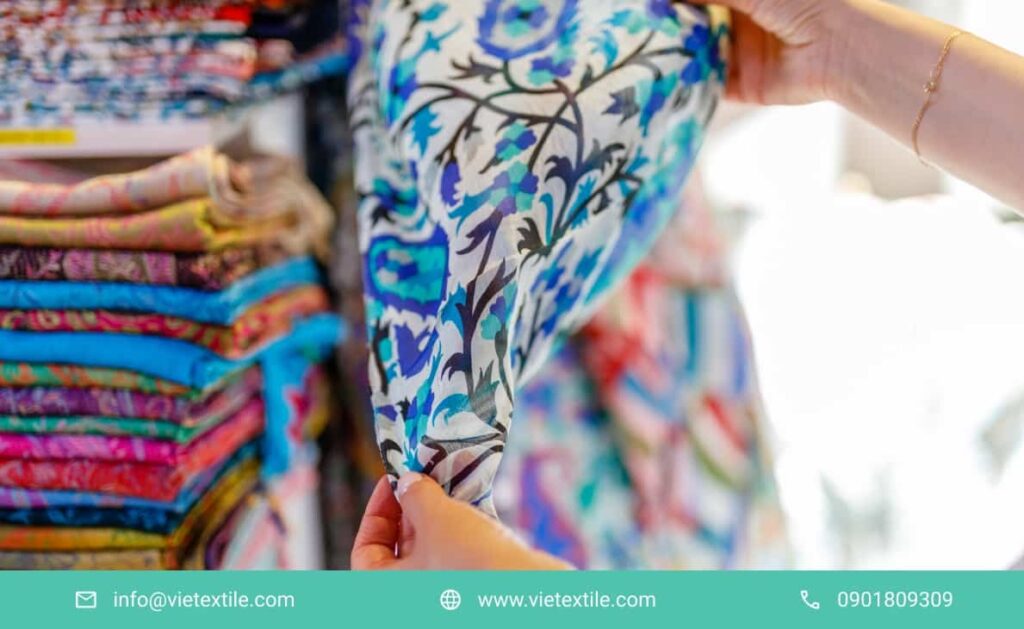
For an objective view, Pigment Ink needs to be compared with its two main competitors in fabric printing: Dye Ink and Reactive Ink.
5.1. Pigment Ink vs. Dye Ink
| Characteristic | Pigment Ink | Dye Ink |
|---|---|---|
| Composition | Solid color particles suspended | Completely dissolved dye |
| Color Fastness | Very high (water, UV resistance) | Low (fades easily with water, sunlight) |
| Color Vibrancy | Good, but less vibrant than Dye | Vibrant, deeper colors |
| Machine Maintenance | More difficult (prone to printhead clogging) | Easier |
| Hand-feel | Slightly stiff if printing large blocks | Very soft |
| Suitable for | Fabric printing, images requiring long-term durability | Photo printing, internal documents |
5.2. Pigment Ink vs. Reactive Ink
Reactive Ink is typically used for cotton/silk fabrics, requiring complex steaming/washing processes after printing.
| Characteristic | Pigment Ink | Reactive Ink |
|---|---|---|
| Process | Simple (heat curing only) | Complex (steaming, washing, drying) |
| Water Consumption | Very little (almost a dry process) | Very high (due to washing process) |
| Color Fastness | Very good | Very good (due to chemical bond) |
| Hand-feel | Slightly stiff | Very soft |
| Materials | Versatile (Cotton, Poly, Blends) | Mainly Cellulose fibers (Cotton, Rayon) |
Clearly, this ink solution offers an ideal balance between durable print quality and simplicity, as well as cost savings in the production process.
6. Technical Factors When Using Pigment Ink
To achieve the best quality with Pigment Ink, some important technical factors in the printer operation and fabric handling process must be noted.
6.1. Optimizing the Curing Process
Temperature and curing time are the two parameters that determine the adhesion of the pigment solution.
- Temperature: Must be high enough to activate the polymer layer (usually from 150°C – 180°C).
- Time: Must be long enough for the polymer to bond tightly with the fabric fibers (usually 30 seconds – 3 minutes, depending on the machine type). Incorrect adjustment can reduce wash durability.
6.2. Controlling the Printing Environment Humidity
A printing environment with too high or too low humidity affects the quality of the ink.
- Low Humidity: Easily causes the ink to dry quickly on the printhead, leading to clogging.
- High Humidity: Affects the solvent evaporation rate and the ink drying time on the fabric, reducing sharpness.
6.3. Fabric Pre-treatment
Although the ink can print on many types of fabrics without pre-treatment, applying a Pre-treatment layer (especially for DTG printing on dark cotton) is necessary to:
- Enhance Sharpness: Helps the color particles lie neatly without bleeding.
- Increase Adhesion: Improves wash durability to the maximum level.
7. VieTextile – Leading Pigment Ink Solution Provider Partner
VieTextile is proud to be a pioneer in providing professional digital printing solutions for the textile and garment industry. We are committed to delivering high-quality Pigment Ink lines that meet the most stringent standards of the international fashion market.
Our ink products at VieTextile are researched and developed to optimize printing performance on various fabric types. We understand that the quality of this printing medium directly determines your brand’s reputation; therefore, every batch is rigorously tested for viscosity, particle size, and fade resistance. We not only sell pigment solutions but also provide comprehensive technical solutions and support for printing machine operation.
7.1. Supply Capacity and Quality Commitment
- Safety Standard Products: All ink products from VieTextile comes with safety certifications, is user- and environment-friendly, and does not contain prohibited toxic substances.
- In-depth Consultation: Our experienced technical team will advise on the most suitable Pigment Ink formula and color profile (ICC Profile) for your fabric type and printing machine model.
- Superior Durability: Commitment to the highest level of wash durability and lightfastness of our inks, helping fashion products maintain their aesthetic appeal for a long time.
7.2. Cost-Effective Printing Solutions
We offer pigment inks at competitive prices, combined with high printing performance to minimize consumable costs. Using our ink quality from VieTextile helps reduce printhead clogging, extend equipment lifespan, and optimize production time. This is a smart investment for any fabric printing business seeking an efficient Pigment Ink solution.
8. Frequently Asked Questions about Pigment Ink (FAQ)
Q: Can Pigment Ink print directly onto 100% Polyester fabric? A: Yes. The ink can print directly onto 100% Polyester without the complex Sublimation process. However, a light Pre-treatment layer is recommended to optimize wash and rub fastness.
Q: Is the color fastness of Pigment Ink truly better than Dye Ink? A: Fundamentally, the color fastness of this ink (especially UV and water resistance) is much better than Dye Ink due to the structure of solid color particles protected by a polymer layer, which are not dissolved.
Q: Is the initial investment cost for Pigment Ink technology high? A: The initial investment cost for DTG or roll-to-roll printers using Pigment Ink may be higher, but the overall operating cost (no steaming, no washing required) is lower compared to Reactive Ink.
Q: Does printing with Pigment Ink cause printhead clogging? A: Although the ink is particulate and more prone to clogging than Dye Ink, using pigment inks quality, adhering to maintenance procedures, and controlling humidity will minimize the risk of clogging.
Q: Is Pre-treatment necessary when printing Pigment Ink on white cotton fabric? A: For white cotton, Pre-treatment is optional but recommended to maximize the color vibrancy and wash durability of the final print. For dark-colored cotton, Pre-treatment is mandatory.
Q: Is Pigment Ink suitable for designs requiring subtle color gradients? A: Yes. Modern printing systems using Pigment Ink have significantly improved their ability to reproduce color gradients and image details, meeting the requirements of complex designs well.
9. Conclusion
In summary, this ink technology is a groundbreaking printing technology that offers many strategic benefits to the fashion industry. Although it has some minor limitations regarding color vibrancy and hand-feel compared to Dye or Reactive inks, its advantages in absolute color fastness, versatility on multiple materials, and environmental friendliness have made Pigment Ink the leading choice for modern digital fabric printing.
Investing in high-quality Pigment Ink and adhering to technical procedures will be the key for textile and garment businesses to optimize production, meet sustainable fashion trends, and the market’s increasing demand for personalization. VieTextile is committed to accompanying you, providing the most optimal ink solution to elevate the quality of your products.
To optimize Pigment Ink and elevate the quality of your fashion fabric prints, contact VieTextile today!
Contact Information:
Hotline: 0901 809 309
Email: info@vietextile.com
Website: https://vietextile.com
